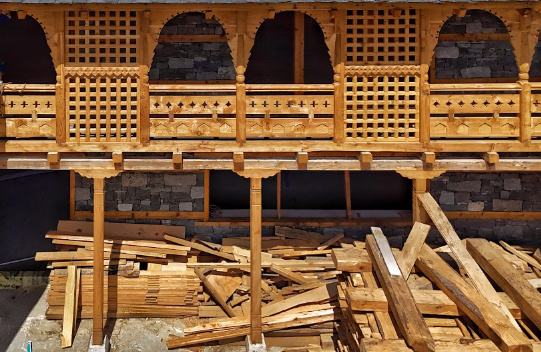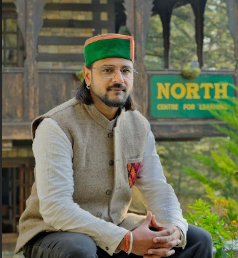Architect Rahul Bhushan, founder of the architectural practice North, is dedicated to reviving and advancing the rich cultural heritage of Himachal Pradesh through his sustainable designs and vernacular construction techniques. His work seamlessly integrates traditional building methods with modern innovations, fostering a harmonious relationship between architecture and the environment.
Growing up in Shimla, surrounded by colonial architecture, Rahul Bhushan developed an early fascination with building design. This passion led him to establish North in 2017, a studio based in Naggar, Himachal Pradesh, committed to sustainable architecture that honors local traditions. “We are a quintessential Himachal-based collective introducing new building concepts emerging from vernacular architecture and indigenous craftsmanship to redefine an eco-conscious way of living,” says Ar Rahul Bhushan.
His approach emphasizes the use of indigenous materials and techniques, utilizing locally sourced wood and stone as prime construction materials, aiming to create structures that are both environmentally friendly and culturally resonant.
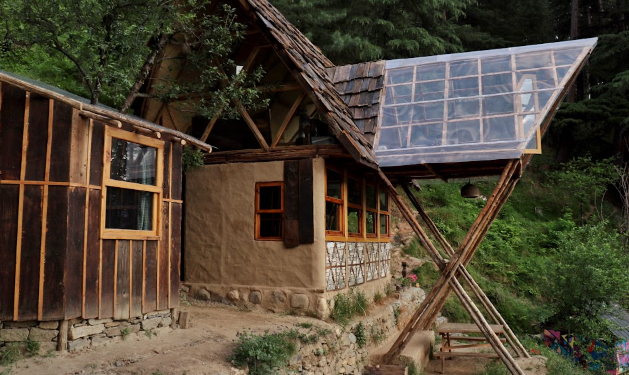
Bhushan is leading the push to bring back Kath Kuni, a zero-carbon-footprint architectural style that employs locally available wood and stone for construction.
A graduate of NIT, Bhushan pursued a master’s degree in interior architecture and design from CEPT in Ahmedabad. After teaching for a year at the university, he decided to return to his home in the hills in 2017. “I wanted to revive traditional architectural techniques to make them more suitable for the modern context,” he quips.
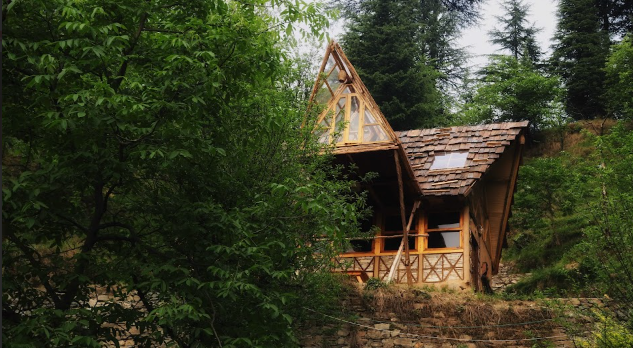
One of Bhushan’s notable projects is the Dhajji House, a cabin constructed using the ancient dhajji dewari technique. This method involves a criss-cross wooden framework filled with stone and mud-plastered walls, providing both seismic resilience and thermal efficiency. Completed in 2021, the cabin is nestled in Naggar’s lush landscape, seamlessly integrating with its natural surroundings. Bhushan reflects: “A 200-year-old Himalayan building technique called dhajji dewari has been adapted to build this cabin from wood, stone, mud, slate, and glass. The project is a testament to merging the old with the new, standing as a dignified tribute to Himachal’s time-honored building methods while confidently stepping into the future.”
For this project, reclaimed mature timber from a 100-year-old local home was used, with the stairs installed as they were. A eucalyptus tree with its irregular round form became part of the cabin’s framework. Pinewood was used for structural elements, while rosewood was chosen for furniture due to its strength and flexibility. Mud plaster, made from a mixture of clay soil, hay, and manure, was applied to the walls. “Mud creates softer edges and naturally curved forms, and stone holds the wood and mud together. These stones were carefully broken into the right size, one by one, to fit together and build the walls,” he explains.
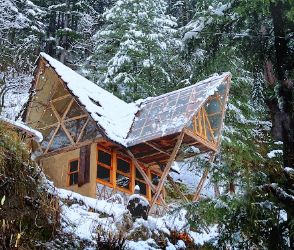
In addition to the Dhajji House, Bhushan has contributed to the Rohtang Ropeway project, a large-scale public initiative in Himachal Pradesh. This project envisions world-class cable car stations designed to reflect the spirit of the region. Bhushan’s role involves creating structures that are both functional and deeply connected to the local cultural and environmental context.
Another noteworthy project, The RAAS House, showcases the vernacular mountain building technique of Kath Kuni. The home features four bedrooms alongside spaces that blend old-world charm with modern comforts. The modular kitchen sits adjacent to a traditional tandoor room—a space where Himachali families gather around a cast-iron wood-fired heating object (tandoor) during colder months. “The highlight of the project is that the balconies throughout the building are hand-carved with traditional motifs, staying true to a classic Kath Kuni home,” he says.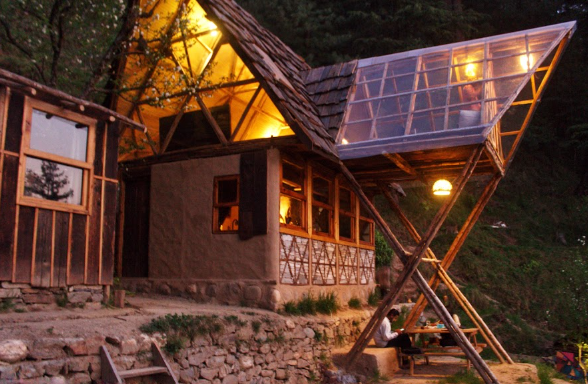
Despite its substantial size, the house harmonizes with its surroundings, exemplifying the ancient architectural techniques that evolved from the region’s climate and terrain, using materials sourced within a 10-km radius.
Bhushan’s commitment to sustainability extends beyond individual projects. At North, he has developed an ecosystem encompassing architecture and design, construction, education, eco-tourism, and community development. This holistic approach aims to promote sustainable development in the Himalayas, preserving traditional craftsmanship while incorporating modern innovations. He states, “Sustainability is not an option; it must be a fundamental value in everything we build.”
Through workshops and residencies, Bhushan educates young architects and craftsmen about vernacular architecture and sustainable living. By training local craftspeople and engaging with the community, he fosters a collective approach to building that respects both cultural heritage and the environment. His vision for North is to inspire a community-driven way of living, working towards a holistic future that honors the past while embracing the possibilities of the present.
